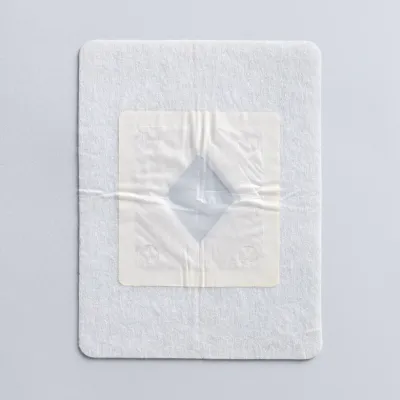

Safeguard Medical

Russell - Chest Seal for Open Chest Wounds
The Russell Chest Seal is an advanced medical device designed for managing open chest wounds and bleeding. It incorporates a hydrogel-based multi-layer dressing featuring a low-profile, four-aperture valve for optimal performance. Mounted on a non-woven fabric, this seal provides a flexible and consistently adhering surface, supported by a silicone-coated release liner to prevent stretching or distortion. Remarkably, it is one of only two chest seals verified to be 100% effective in open chest wound models with active hemorrhage. Engineered to function in extreme conditions, the hydrogel base has demonstrated no loss of adherence in temperatures ranging from -19.5°C (-3.1°F) to 71.5°C (160.7°F) across various skin surfaces. It is manufactured in the USA and is BAA compliant, assuring quality and reliability. This product is especially significant for medical and military professionals, and also accessible for general responders.Most popular related searches
thorax
advanced medical device
medical device design
skin surfaces
skin surface
medical kit
medical device
hydrogel
medical device management
medical product
- Packaged : 14 x 2.7cm
- Deployed : 20.3 x 15.2cm
- Weight : 0.7 oz
- User friendly: Fast, easy, intuitive - large hole in base material allows for clear visualization of wound, facilitating quick, accurate placement with a reduced risk of obstructing the wound
- Reliable: Patented hydrogel base keeps device in place for hours, while 4 peripheral apertures allow for drainage of air and blood
- Compact: Low-profile and highly flexible - packs into any medical kit
The Safeguard Difference: The Russell Chest Seal® is designed for performance. Its advanced hydrogel matrix is mounted on a non-woven fabric, enabling a flexible and continuous adhering surface, while its silicone-coated release liner prevents stretching and distortion.
The Russell Chest Seal is one of only two chest seals proven 100% effective in an open chest wound model with active bleeding. The Russell Chest Seal is a hydrogel-based multi-layer dressing with a low-profile, four-aperture valve. [1] Our hydrogel base is proven effective in extreme temperatures, demonstrating no loss of adherence when tested at -19.5ºC (-3.1ºF) and at 71.5ºC (160.7ºF) on various surfaces of the skin.
